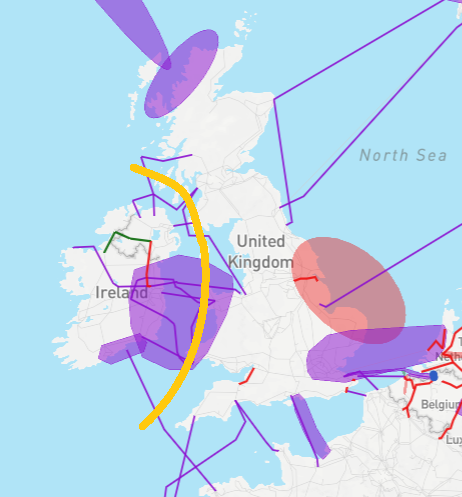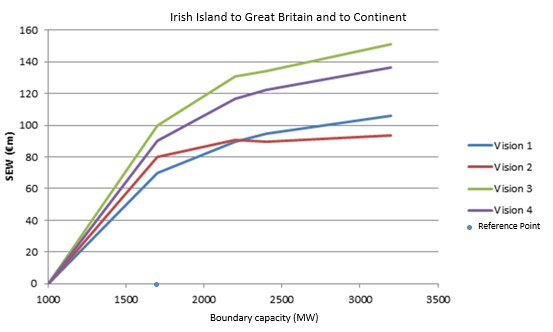Ireland - Great-Britain and Continental Europe
Stronger interconnection of the Irish system with Great Britain and Continental Europe.
Two 500 MW HVDC interconnectors currently exist between both jurisdictions in Ireland (IE/NI) and Great Britain (GB). Numerous third party future projects are also proposed for this border in TYNDP 2016. Furthermore, there is a long term project to connect Ireland to Continental Europe. There are significant renewable energy resources on the island of Ireland; the development of interconnection capacity across this boundary will allow these resources to be exploited. Investments in the boundary also play a role in the development of the Northern Seas Offshore Grid.
TYNDP findings

The analyses show that projects between both Ireland and GB, and Ireland and Continental Europe, have high benefits. Some of the proposed projects make use of the dedicated connection of renewable generation in Ireland to supply GB, enhancing their associated benefits.
Welfare and Capacity

The detailed TYNDP project CBAs show that the future projects typically provide SEW contributions of 20 – 50 MEuro/year, however, those projects which incorporate large quantities of additional renewable generation provide over 200 MEuro/year. The existing capacity across the boundary is 1000 MW. In 2030, including all TYNDP 2016 mid-term and long-term projects, the reference capacity is 1700 MW. As shown in the graph, there are drivers for additional interconnection from Ireland to both GB and Continental Europe. This is mainly true of Visions 3 and 4, which also have the largest levels of renewable generation in Ireland. However, the total capacity of the proposed future projects is in excess of the required capacity. There are price differences between Ireland, Great Britain and Continental Europe across all Visions. When considering Ireland and Great Britain, Ireland has lower prices than GB in all visions, with the exception of Vision 2, where GB is marginally cheaper. This is reflected in the SEW values in the CBA assessments of the third party future projects across this border; the values for Vision 2 tend to be the lowest. Considering Ireland and Continental Europe, prices in Continental Europe are marginally cheaper in Visions 1 and 2. For Visions 3 and 4, prices in Ireland are cheaper by a more significant amount. This is again reflected in the SEW values in the CBA assessments for projects on this border.
Interconnection target for 2030
The planned investments will allow the reference capacity to be met by 2030. The analysis shows that there is potential for further capacity by 2030. However, given uncertainties in the exploitation of the large RES resource of the island of Ireland, as well as potential large scale demand connections, no definitive 2030 target is provided here.
